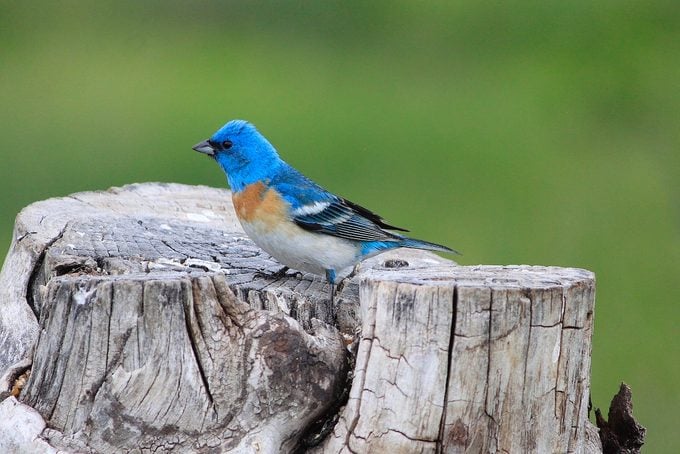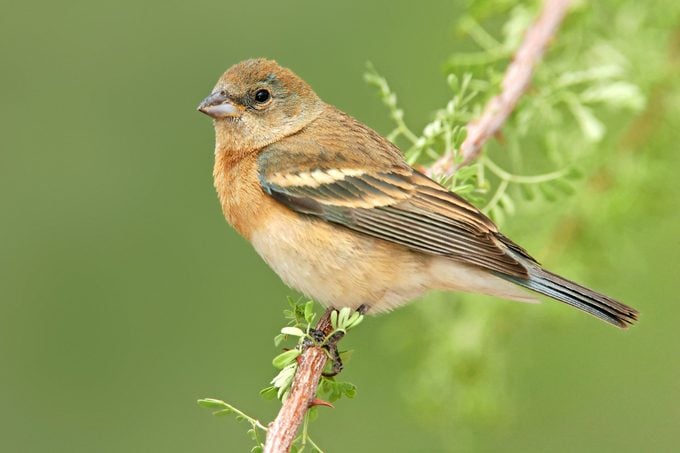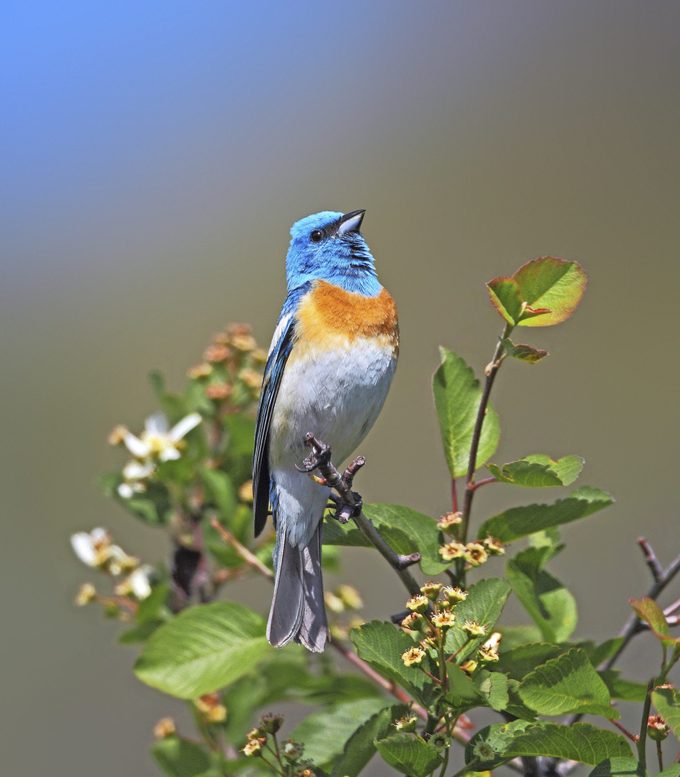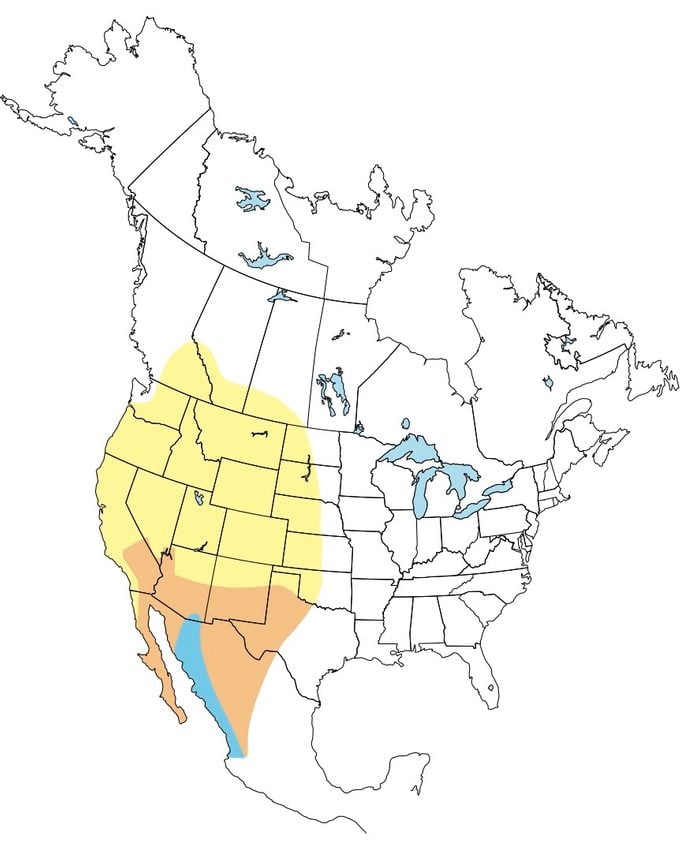How to Identify a Lazuli Bunting
Updated: Jul. 09, 2024
Get to know the lazuli bunting and where to find this bird. Learn what males and females look like and how to attract them.
Lazuli buntings are named for the lapis lazuli gemstone. With their intense color, it’s certainly fitting. To continue the gemstone theme, a group of buntings is collectively called a decoration or mural. And the lazuli bunting’s scientific name is Passerina amoena means “beautiful sparrow.”
Meet 6 beautiful bunting bird species you should know.
On This Page
What Do Male and Female Lazuli Buntings Look Like?

With stunning blue-colored feathers, a pumpkin chest and a white belly, lazulis decorate backyards in the West. In addition to their dynamic blue plumage, you can tell a male lazuli bunting by the white bars on its upper wing (one thick and one thin), its cone-shaped bill, its sloping forehead and its notched tail. Compare this species to blue grosbeaks.

A female has a gray-brown body with buff-colored wingbars, a hint of blue on its wings and tail, and a tan breast.
“Lazuli buntings are a sister species to indigo buntings,” says Emma Greig, who is the project leader for Project FeederWatch at the Cornell Lab of Ornithology. “Indigo buntings are blue all over and live in the East. Where their ranges overlap on the Great Plains, they can breed and hybridize. These two buntings are special because of this hybrid zone, and they are greatly studied.”
Lazulis also have similar features as the painted bunting, just without as many colors.
How to Attract Lazuli Buntings

Lazuli buntings like bushy or brushy areas. “If you want to bring them out of the bushes, put white proso millet seed in your feeders (also a favorite food of indigo buntings), though they’ll also eat sunflower seeds,” Emma says. With the right plants and a bit of luck, they’ll flutter to your home.
Lazuli Bunting Songs and Calls

When male lazuli buntings are around 1 year old, they learn to exactly match the song of older males, which is a complex combination of notes that are repeated a few times.
“If a bird has an unfamiliar song, then the others can get aggressive,” Emma says. “Acoustically, humans don’t have that fine an ear, but to lazulis, a bird from another territory has a foreign accent.” Males sing not only to define their turf, but also to attract a female. Their calls consist of a harsh spuk or bzzzt.
Bird sounds courtesy of the Cornell Lab of Ornithology
Lazuli Bunting Nests and Eggs
Once paired, the female weaves a cup-shaped nest and lays three to four pale blue eggs. Pairs may succeed in raising one or two broods, and willingly nest in backyards with native shrubs.
Females weave their nests using common backyard materials and then cement them with spiderwebs and silk from caterpillars. Each nest is less than 4 inches across and takes nearly a week to complete.
Do you know what a snow bunting looks like?
Lazuli Bunting Range and Migration
In the fall, lazulis migrate to western Mexico. Their migration is unusual because they molt en route, whereas most birds molt where they breed or over-winter. “They follow the monsoon rains through the desert. It’s very moist, and there are lots of insects while they are there,” Emma says. In summer, look for them in the western states, from California to the Dakotas.

Next learn how to identify a varied bunting.
About the Expert
Emma Greig is the project leader of Project FeederWatch, a citizen science program, for the Cornell Lab of Ornithology. Emma holds a Ph. D. from the University of Chicago and previously was a postdoctoral associate in Macaulay Library.






















